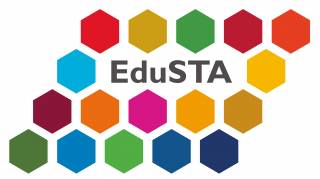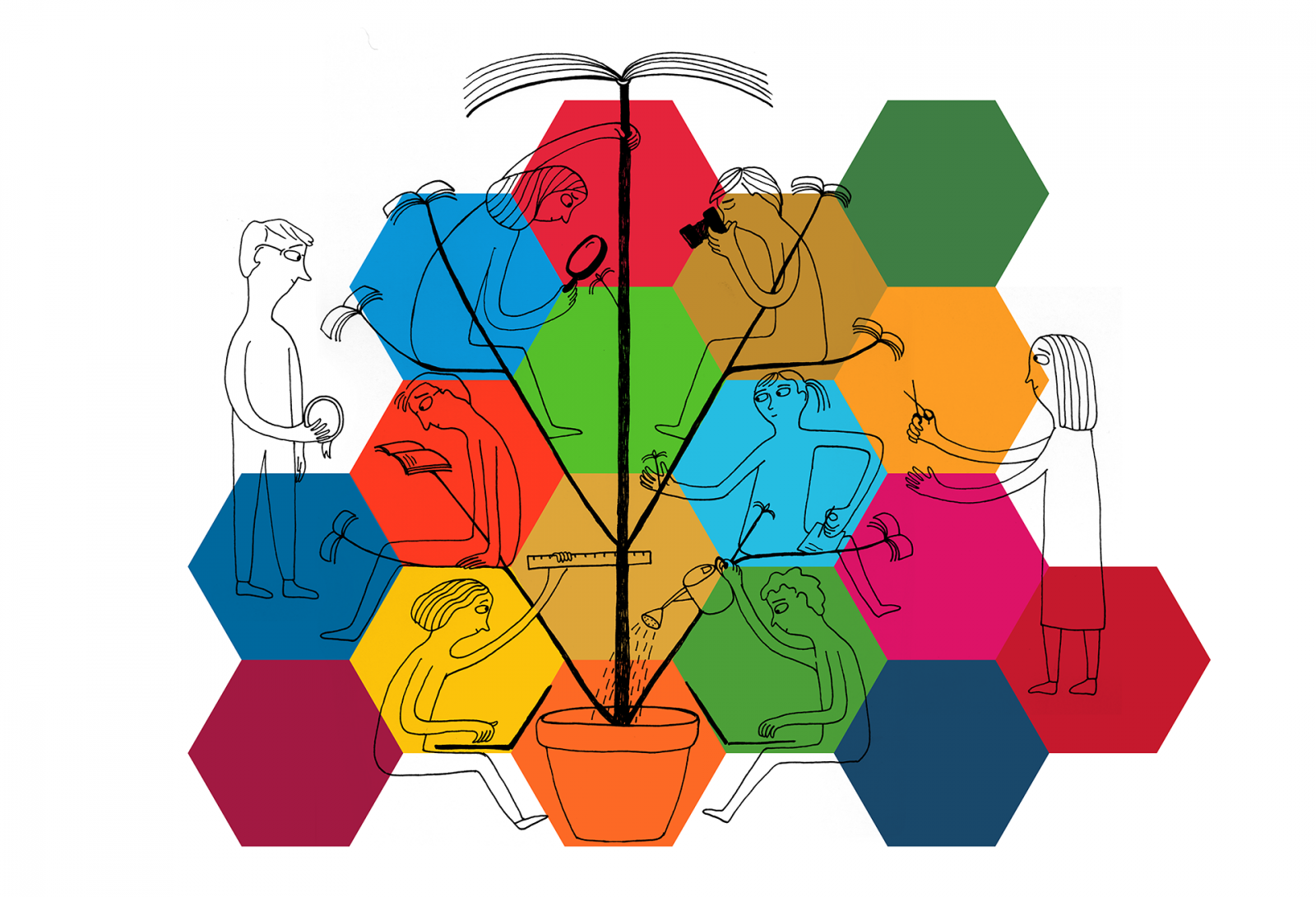EduSTA project team launched the open digital badges constellation during periodic meeting in the Netherlands. The presented badge constellation is a result of extensive development work.
First, the project team searched common features of three significant frameworks of teachers’ sustainability competences and then identified the common topics with Green Competences – the present the European Union framework for the competencies for green transition. In this project process, teachers and experts were interviewed, and policy documents were reviewed in all five project countries.
As a result of this, four competence areas have been identified. They are sustainability literacy, learning ecosystem design, enabling action learning, and reflexive praxis. Each of these contains several micro-badges.
Open digital badge constellation supports teachers
The badges will help teachers to enact the Green Comps in an educational context and to help students to learn Green Comps. Various actions are needed: curriculum development, designing learning processes, interaction with teacher students, assessment, counselling processes as well as acting as a member of the educational community and society.
The project is now in piloting phase. Later this year, based on the experiences from the pilots, the team will redesign and develop further the badge constellation design. After that the badges are ready to be used for all teachers – but also representatives of other target groups – interested in learning for sustainability.
The constellation consists of nine badges and includes description of competence, assessment criteria, ways of demonstration, proof of competence, keywords and learning resources for each badge. The badges contain a lot of information about the issuer, the date of awarding the badge and what kind of competence it describes.
“The biggest badge, sort of completion when you have completed required number of badges of the constellation, is the badge of Educator for Sustainable Future”, describes Project Leader Eveliina Asikainen from Tampere University of Applied Sciences (TAMK). She adds:
“The badge of Educator for Sustainable Future is a kind of transparent tool for demonstrating and showing your competence also in different kinds of environments as it’s a digital certificate”.
What can be done with the badge constellation?
“The beauty of these badges is that they are designed to be adaptable for many different learning needs, educational contexts and situations”, says Principal Lecturer Hanna Teräs from TAMK.
According to Teräs, it’s possible to integrate the badges into an existing program, either in initial teacher training or as a teacher professional development program. You can integrate a set of selected badges, or all of them, or just one competence area, depending on the need.
Additionally, it is feasible to create new learning modules to go with the badges, either with a few or all of them. It is also possible to use the badges on their own and create badge-driven learning pathways. They’re also designed in such a way that it’s possible for an individual to be guided by the badges to acquire, apply, and demonstrate competencies required to achieve certain badges.
Different combinations and practical approaches in each country
The project team has proceeded with different approaches in each country.
The University of Girona is doing the integration of the badges into initial teacher training course. This was also the approach adopted in Gothenburg University and Czech University of Life Sciences. They are integrating in existing programs whereas Tampere University of Applied Sciences and Hanze University of Applied Sciences are piloting newly implemented and opened courses within an existing teacher professional training program.
Enormous exponential impact in empowering teachers and teacher trainers
Dermot O’Donovan, representative of the West of Ireland and of the Atlantic Technological University (Ireland), and Jan-Willem Noom, academic staff and researcher from the Aeres University of Applied Sciences Wageningen from the Netherlands, gave their reflections on the project so far.
O’Donovan considers that we are all motivated and mandated through the United Nations development goals and international agreements to recognize the role of education for sustainable development.
“In terms of our teacher educators and our teacher stakeholders, we can see the enormous exponential impact on empowering not just our teacher trainers, our teacher educators, but our pre-service teachers too”, he says. There’s not only a significant knowledge gap but also a competence and a confidence gap in embracing some of these areas. O’Donovan says that one of the reasons for that is that we don’t know the answers to the questions that we’re posing.
“And I think it’s about giving people the confidence as much as the competence to embrace this area and to do it in a safe way.”
O’Donovan reminds to keep in mind the learner and their navigation of the digital badges. The nice thing about digital badges is their accessibility: even though the badges might be contextualized in a region, they can be very easily accessible. He also appreciates the fact that they are verified, standardized particularly by a competence-based approach, customized and flexible.
In his opinion, the idea of experiential, inquiry-based learning rises a question on how to engage our young people.
“We don’t engage them anymore by standing up in the classroom and giving them knowledge. We must engage them in their learning, and ESD really encourages that. Surely that takes a little bit of practice.”
Strong focus on the teacher and teacher training skills and competencies
Jan Willem Noom is an experienced teacher trainer from the Netherlands. He has been involved in projects relating to education for sustainable development.
“Quite often you see that these kinds of projects have a strong focus on ways for designing student’s activities. In EduSTA project I’m really impressed about the strong focus on the teacher and teacher training skills and competences. Instead of focus being on pedagogy, didactical competences, or the content related subjects it’s more important to focus on the added value of education for sustainable development everywhere from primary and secondary education to higher education.”
Noom states that it is great to see that the EduSTA project focuses on an international level of the creation of online badges.
“It’s also great that you give space to the different countries across Europe to design some more personalized learning activities or modules. I really hope that you will find a way to continue maybe in a new project. There are several international networks across Europe and outside Europe to share good practices.”
You can learn more about the open badges implementations and plans of piloting them in the webinar video. The subtitled video is published at TAMK’s YouTube channel.
We will share news on each pilot in all five participating countries later.
Additional information:
Eveliina Asikainen
EduSTA Project Leader Senior Lecturer, Pedagogic Innovations and Culture
Tampere University of Applied Sciences
eveliina.asikainen@tuni.fi
Text: Hanna Ylli
Illustration: Ester Tajrychová


